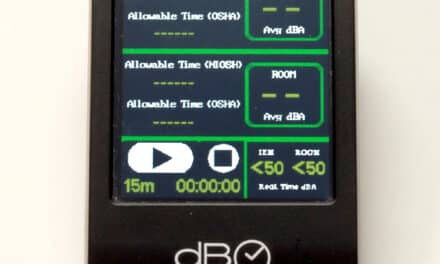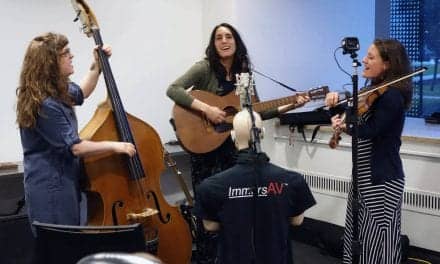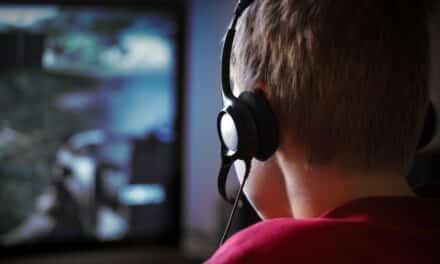To support musicians on their journey to better hearing health, clinicians need to understand how hearing healthcare intersects with their professional needs.
By Frank Wartinger, AuD
An arena stage immediately following soundcheck; a cramped practice room in the old college music building; the other side of a webcam while touring in Europe; a quiet corner of a dive bar; and, on one memorable occasion, a white conversion van in the muddy grass parking lot outside of a rained-out music festival in Vermont.
For hearing care professionals, working with musicians often means “meeting them where they are.” The physical aspect of this phrase is often obvious, cliché, and comical, but what is more subtle is the human side of the phrase. To really work with musicians, clinicians need to understand how hearing healthcare intersects with their professional needs.
In my practice, I focus my efforts on what matters most to the performing artist: supporting career longevity, removing barriers to performance, and demystifying the sense of hearing. In my experience, music industry professionals care deeply about their hearing. However, due mainly to limited awareness and a lack of focused public outreach, many don’t actively seek care until they’ve developed a career-limiting hearing injury.
Further reading: Music Industry Audiologist: The Human-First Approach
Servicing Music Audiology
The subspecialty practice of music audiology is admittedly not standardized among the small group of hearing care professionals who provide it.
I’m as excited to share my own practice methods as I am to learn from my colleagues’ articles in this series. Speaking for my small practice based in Philadelphia, I split my services into four main branches: on-site, clinic-based, teleaudiology, and media/educational outlets. In all of these delivery methods, the goal is to motivate music industry professionals to take hearing health matters into their own hands and provide support for their healthy hearing habits. Follow-up visits, ear piece verification, and maintenance/modification are offered for all device fittings.
On-Site Services
The lifestyle, travel, late nights, and non-standardized employee benefit packages mean that music industry professionals can find accessing traditional brick-and-mortar clinical services cumbersome and even alienating. By bringing our services to their “natural habitat” we can increase accessibility and break down the barriers.
When performing services on-site, the absolute bare minimum is to provide education and counseling. Countless visits have been spent simply fielding questions, clarifying device options, and straightening out misconceptions. The majority of my on-site services include earmold impressions for custom earplugs and/or in-ear monitors.
At all visits, I emphasize the importance of getting a hearing test whenever physically possible. There can at times be insurmountable complications with noise, timing, and setting, but by outwardly valuing this service we are sending a powerful message that the patient’s hearing wellness is our utmost concern.
Since hearing testing is a rare activity for most patients I work with, my mobile gig bag contains a laptop-based diagnostic audiometer. I’m aiming to at least obtain air-conduction thresholds up to 16kHz in both ears. Anything more is icing on the cake when you’re fighting with unpredictable environmental factors.
Further reading: Addressing Music and Stress
Clinic-Based Services
My clinical visits resemble the care provided to any other patient, perhaps with an increased emphasis on hearing loss prevention education and counseling.
In the clinic we overcome fewer situational barriers and can readily offer higher-level tests such as OAEs, speech-in-noise batteries, immittance measures, and full comprehensive diagnostic tests when applicable. That said, we all get the common inquiry from a musician who “only wants the impressions.” To combat this, my office bundles a simple air conduction screening with any office visit, and we are quick to recommend comprehensive diagnostic testing when the results indicate a need.
Of course, science has definitively proven that all musicians are people and all people have the chance to develop hearing disorders that require specialized audiologic care. With musical people, the only thing that changes is a healthy dose of acknowledgment of the impact tinnitus, hyperacusis, diplacusis, and hearing loss may have on their professional activities.
Teleaudiology Services
Virtual care is a new bolt in the audiologist’s proverbial quiver, and this method has been extremely well received over the last year. We provide these services through the Tuned platform, and our first major contract was with MusiCares (the charity arm of the Recording Academy, aka the Grammy Association).
MusiCares has been funding hearing health services for years, but in the past it has been limited to delivery of custom hearing protection.
Recognizing the old adage that teaching a person to fish is more valuable than providing an earplug (mixed metaphors are my specialty), MusiCares has wisely pivoted to funding the professional component of the visit.
In these visits, musicians are scheduled for one-hour virtual consultations to review their thorough questionnaire and the online hearing screening, which includes a digits-in-noise test to improve validity. These visits have seen an overwhelmingly positive response from attendees, and MusiCares has indicated that our program is one of their most well-received care offerings to date.
As we continue to develop the program, keep watching this space, as specialties outside of music audiology will soon be able to leverage this delivery method.
Further reading: The Art of Accurate Earmold Impressions for In-Ear Monitors
Media and Education
Finally, I spend an embarrassing amount of my time producing media and educational resources for the musician population and audiologists.
With the goal of spreading best practice standards (such as the AAA 2020 document co-authored with some of the world’s leading experts in music audiology) to students and practicing professionals, I developed and host Talking Ears, a podcast exploring the topic of music audiology and hearing wellness in the industry. For this work, I was the proud recipient of the 2023 NHCA Media Award.
Promoting Music Audiology Awareness
Drawing this to a close, I want to leave the hopeful impression that just like with any other specialty, the goal of sharing this information is partially to improve awareness and promote appropriate referrals to our care.
In the case of music audiology, it is evident that much of this care can be performed at a high standard in every audiology office, after taking the time to familiarize oneself and staff with the core processes and standards.
Resources are numerous and I’ll list them here for the curious provider: the aforementioned AAA Consensus Document, the Sensaphonics Gold Circle training, article series such as these, Musicians’ Clinics of Canada, various writings and textbooks, and continuing education offerings at conferences and online. When all else fails, feel free to reach out to discuss your cases and how we can collaborate to ensure your music industry professional receives the best care from your practice.
Until there are a dozen dedicated music audiologists in every city, or people decide that the guitar is no longer “cool,” there will never be a scarcity of folks interested in turning up, enjoying the joys of music, and needing the services of a well-informed audiologist.
Frank Wartinger, AuD, is the founder of Earmark Hearing Conservation, a music audiology clinic in Philadelphia. He serves on the CAOHC (Council for Accreditation in Occupational Hearing Conservation) Council representing the American Academy of Audiology, is an adjunct faculty at Salus University and Wayne State University, and co-authored the AAA 2020 Clinical Consensus Document “Audiological Services for Musicians and Music Industry Personnel.” Additionally, Dr Wartinger created and hosts “Talking Ears,” a musician-focused hearing health podcast.
Original citation for this article: Wartinger F. Meeting Musicians Where They Are. Hearing Review. 2024;31(1):14-17.
Photo: Dreamstime





